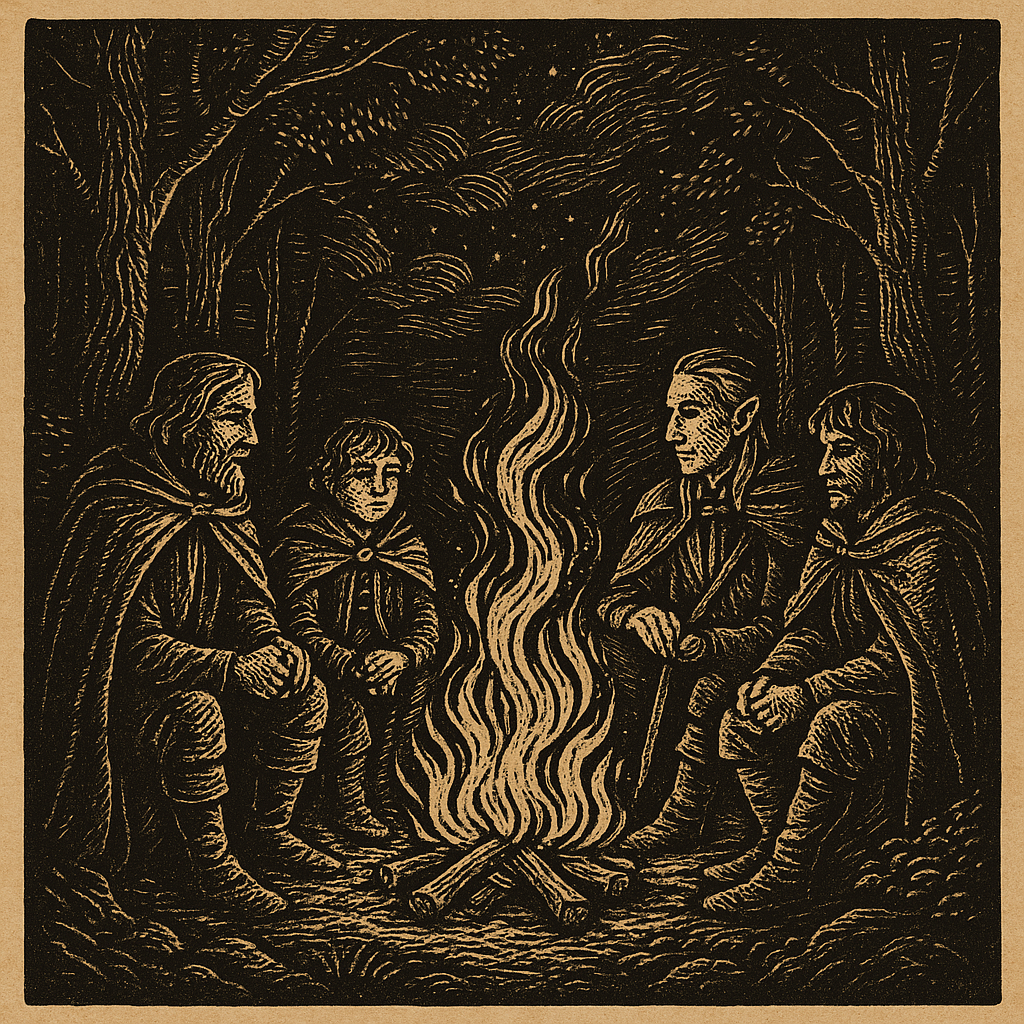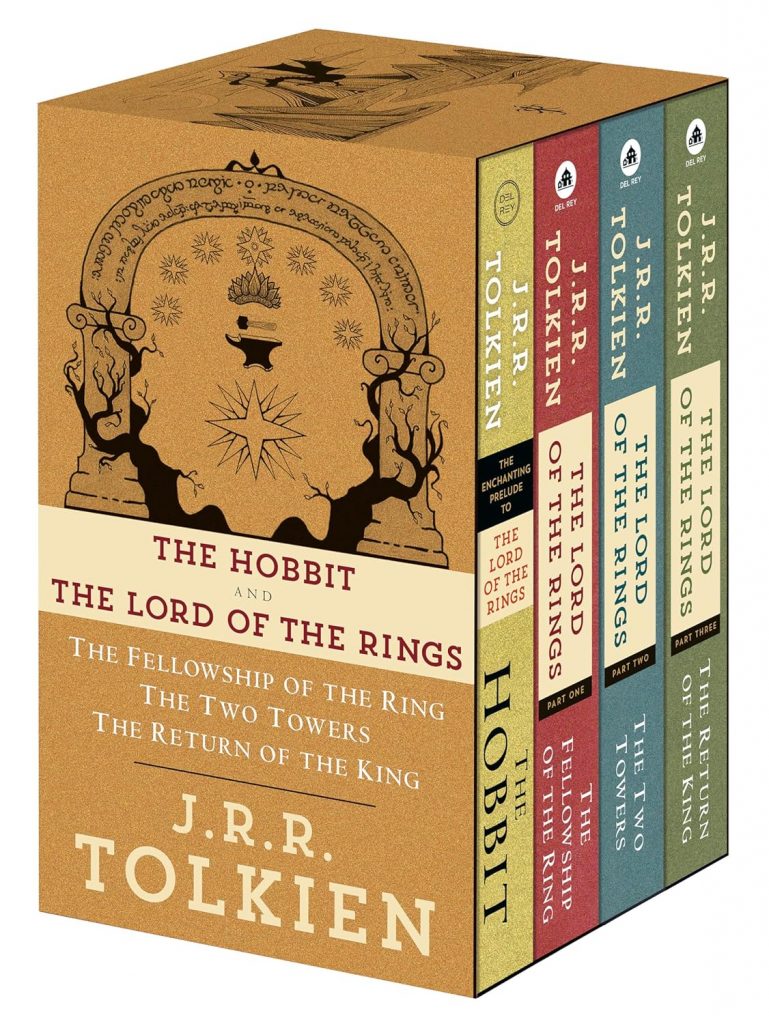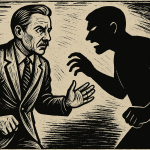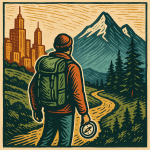Somewhere in the wild lands of Middle-earth, far from safe beds and second breakfasts, a small group sits around a campfire. They’ve walked all day. Their feet hurt. Someone’s cloak still smells faintly of rain. There’s bread in their packs, and if you squint at the stars long enough you might just forget the darkness in the trees. They’re together — and that’s enough.
That’s the quiet, beating heart of The Lord of the Rings: friendship. Not the Instagram kind where you tag each other in memes, but the sort forged when you share danger, bad weather, and the same small victories. Tolkien didn’t just write about defeating evil; he wrote about holding onto each other when the road is longer than you thought it would be.
Why Tolkien’s Friendships Feel So Real
Tolkien understood that friendship isn’t one thing — it’s a web of loyalty, sacrifice, banter, trust, and sometimes the awkward silence of two people who don’t need to say anything. He gives us bonds that cross backgrounds, ages, and species. The kind where you don’t just stand with someone; you stand for them.
One of the most telling lines comes when Sam Gamgee, gardener turned unlikely adventurer, says, “I’m glad you’re with me. Here at the end of all things, Sam.” That’s not about victory. That’s about presence. About showing up, even when there’s nothing left to say.
In real life, we tend to undervalue that kind of constancy. We think friendships are built in bursts — late-night conversations, weekend trips, shared jokes. Those help, sure, but Tolkien shows us the deeper truth: it’s the long haul that counts. The people who will walk the miles with you, even when it’s uphill and raining sideways.
Different Flavors of Fellowship
Tolkien’s world gives us several distinct kinds of friendship, all of them worth importing into the 21st century.
- The Steady Anchor — Sam to Frodo. The friend who isn’t flashy but never leaves. In modern life, this is the person you can text at 3 a.m. and know they’ll answer — or at least bring you coffee the next day.
- The Respect-Born Alliance — Legolas and Gimli. At first glance, they’re oil and water. But shared struggle carves respect into something sturdier. Today, think of unlikely friendships that cross cultural, political, or lifestyle divides.
- The Soulmate of Shared Vision — Merry and Pippin. The kind of friends who might not have all the answers but will throw themselves into the storm with you anyway. Modern translation: the ones who remind you life is worth living even while you’re chasing something serious.
- The Leader’s Equal — Aragorn with the rest of the Fellowship. True friendship between a leader and their companions is built on trust and humility, not authority. It’s the rare friend who can guide without controlling.
The Modern Struggle: Friendship Without Shared Roads
Here’s the hard thing: most of us aren’t trekking across wild lands together. We’re scattered. We keep in touch with texts, likes, and the occasional “we should catch up” that never quite happens. Our shared roads are digital, which means we miss the physical reality of enduring the same weather, meals, and risks.
Tolkien’s friendships remind us that proximity matters. Not because absence kills friendship — it doesn’t — but because presence builds it faster than anything else. When you’ve literally carried someone’s pack for them, or they’ve shared their last piece of bread with you, you can’t help but feel bound together.
So if you want Tolkien-level friendships today, you have to create shared roads. Plan a hike. Cook together. Volunteer for something hard. Shared effort, even in small doses, turns acquaintances into comrades.
When Friendship Scales Up to Community
One of the more subtle threads in The Lord of the Rings is that friendship between individuals can ripple outward into unity between entire groups. The Fellowship isn’t just a band of friends — it’s a coalition. Each member represents a different culture, and their bond models what peace between peoples can look like.
In our world, we’re not uniting Elves and Dwarves, but we are trying to stitch together divided communities. Friendship across boundaries — whether cultural, ideological, or generational — becomes a living example that cooperation is possible.
When Tolkien writes, “The wide world is all about you: you can fence yourselves in, but you cannot forever fence it out,” he’s telling us that retreat is easy, but connection is necessary. Real friendship forces you to engage with the other — even when “the other” feels foreign.
Practical Ways to Build Fellowship Today
If you want to pull the magic of Tolkien’s friendships into your own life, try these:
- Share Hardship — Do something difficult together. Physical challenges, creative projects, community service — anything that asks you both to show up fully.
- Make Rituals — The Fellowship has campfires; you can have Sunday dinners, monthly hikes, or a standing movie night. Regularity is glue.
- Stand Up for Each Other — Not just in crises, but in small, everyday moments. Loyalty isn’t a grand gesture; it’s a habit.
- Cross Your Own Borders — Befriend someone outside your usual circle. Learn their world. Bring your worlds together.
The Quest Is Just the Excuse
The beauty of Tolkien’s friendships is that the quest, while epic, is almost incidental. The road is long, the danger real — but the people are the point. The journey forges something more enduring than victory: fellowship.
In your own life, whatever the “quest” is — raising a family, chasing a dream, building something that matters — don’t forget that the friendships you carry along the way are worth more than the finish line.
Because in the end, as one wise hobbit put it, “It’s the small things, everyday deeds of ordinary folk, that keep the darkness at bay. Small acts of kindness and love.”
That’s not just Middle-earth wisdom. That’s the truest map to follow, wherever your road leads.







Comments by The Dapper Savage